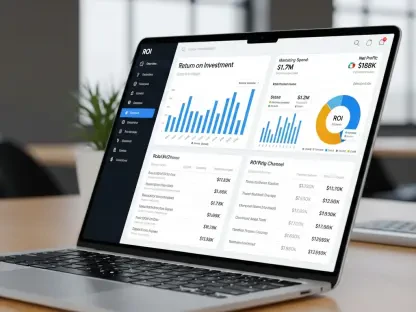What happens when the strategies and tools that drive commerce today become obsolete in less than a year? As 2026 approaches, the retail and brand landscape faces a perfect storm of economic pressures, technological disruptions, and shifting consumer demands that could redefine the industry. A staggering 75% of executives admit to relying on outdated data, creating blind spots that could cost them dearly. This alarming statistic sets the stage for a critical examination of whether commerce leaders are truly equipped to navigate the turbulent waters ahead.
The importance of this issue cannot be overstated. With only months until 2026, the readiness of retail and brand executives to adapt to an evolving market will determine not just profitability, but survival. Tariffs, inflation, and operational inefficiencies are already tightening the vise, and consumer expectations for seamless experiences add another layer of complexity. This exploration delves into the gaps between awareness and action, revealing why preparation for the coming year is a pressing concern for every leader in the commerce space.
Why 2026 Stands as a Critical Turning Point
The looming deadline of 2026 represents more than just a date on the calendar—it’s a pivotal moment for the commerce industry. Economic factors such as rising tariffs and persistent inflation are squeezing margins, forcing leaders to rethink pricing and supply chain strategies. Beyond these external challenges, internal inefficiencies threaten to compound the problem, leaving many businesses vulnerable at a time when adaptability is paramount.
Data from a recent survey of 200 retail and brand executives across the U.S. and U.K. paints a sobering picture. While most acknowledge the storm on the horizon, far fewer have the tools or strategies in place to weather it. This disconnect between recognition and readiness underscores why the next few months are crucial for laying the groundwork to face an unpredictable market.
Navigating a Rapidly Shifting Commerce Terrain
The commerce landscape is evolving at a pace that leaves little room for hesitation. Consumer behavior is increasingly erratic, demanding personalized and frictionless experiences across every touchpoint. At the same time, external pressures like government policies and global economic trends are creating a challenging environment where even small missteps can lead to significant losses.
Research highlights a critical gap in operational efficiency among industry leaders. Many struggle with legacy systems that hinder quick decision-making, while others face difficulties in aligning their teams with the fast-changing demands of the market. This section examines how these dual forces—external unpredictability and internal limitations—are shaping the battleground for commerce in the near future.
Major Obstacles on the Path to 2026 Preparedness
Several formidable challenges stand in the way of commerce leaders as they prepare for the upcoming year. A significant 75% of executives report dependence on incomplete or outdated data, which clouds their ability to make informed choices. Additionally, nearly half still rely on manual processes like spreadsheets, slowing their response to sudden market shifts such as supply chain disruptions or demand spikes.
Further complicating the picture, artificial intelligence (AI) emerges as both a potential solution and a risk. About 3 in 4 leaders view AI with a mix of optimism and concern, often adopting it without first addressing foundational data issues, which can lead to amplified errors. Margin pressures also loom large, with 91% of retail executives citing tariffs as a key factor in pricing struggles, while 92% of brand leaders point to product complexity as a barrier to profitability. Revenue leakage, from pre-checkout glitches to post-sale returns, adds yet another layer of difficulty to maintaining financial health.
Insights from Industry Frontlines
Voices from within the industry bring a human dimension to these challenges. Suzin Wold, a prominent marketing executive, emphasizes the power of adaptability: “While many factors remain beyond control, the ability to pivot quickly and make decisive moves is within every leader’s grasp.” This sentiment resonates with survey findings, where executives express a blend of apprehension and cautious hope about the road ahead.
Real-world stories further illuminate the stakes. Some leaders recount setbacks from rushed AI implementations that faltered due to poor data quality, while others celebrate incremental progress in automating outdated workflows. These firsthand accounts, combined with data revealing a wide disparity in preparedness levels, highlight the uneven terrain that commerce professionals must navigate as the critical year approaches.
Strategies to Build Resilience for the Future
Addressing these challenges requires actionable steps that commerce leaders can implement now. A starting point is a thorough audit of data systems to ensure decisions are grounded in accurate, current information, eliminating costly blind spots. Transitioning away from manual processes by adopting automation tools is another vital move, enabling businesses to respond swiftly to market fluctuations.
When it comes to AI, the focus should be on data integrity before scaling investments, preventing errors that could derail operations. To tackle margin pressures, reevaluating pricing models and streamlining product offerings can help, alongside advocating for clearer government policies on tariffs. Finally, sealing revenue leaks by optimizing customer journeys—fixing technical issues and enhancing post-sale support—can safeguard profitability. These practical measures offer a blueprint for strengthening operations in the face of looming uncertainties.
Reflecting on the Road Traveled
Looking back, the journey toward 2026 revealed a commerce landscape fraught with both peril and possibility. Leaders grappled with outdated systems and economic headwinds, yet many began to chart a course through the turbulence with deliberate, strategic actions. The insights gained from industry voices and hard data painted a picture of an industry at a crossroads, where readiness was not just an advantage, but a necessity.
As the critical year drew near, the path forward became clearer: prioritize data quality, embrace automation, and refine customer experiences to protect revenue. Beyond these steps, fostering a culture of adaptability proved essential in navigating external uncertainties. The lessons learned during this period underscored that proactive preparation was the key to not just surviving, but thriving in an ever-shifting market.









